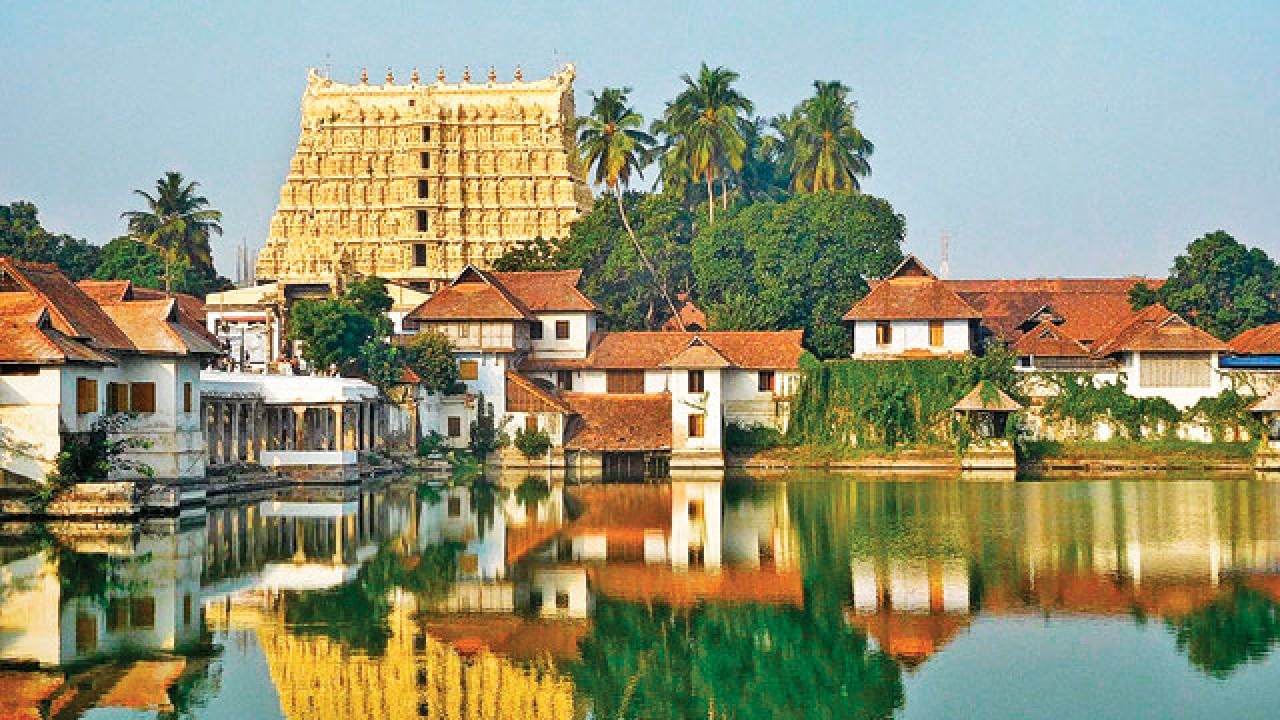
Travancore, the area comprising present-day southern Kerala and parts of Tamil Nadu, was repeatedly invaded by Vijayanagar, and later by the Madurai Nayaks. The colonial struggle for mastery over oceanic trade with India muddled the situation further as foreign powers pitted kingdom against kingdom, feudatory against the sovereign, and brother against brother. The age of Venad monarchs when Kerala and areas of Tamil Nadu were under one king was long over, but the state of the warring remnants worsened due to these invasions and intrigue. In the rump state of Travancore, the feudal lords and high-caste groups gained extraordinary power and could even decide the fate of kings. The ensuing conflicts resulted in endless wars, assassinations and anarchy. The Padmanabhaswamy Temple was a casualty of these events and was intermittently closed for decades. The original temple was gutted apparently in one of these altercations. Moreover, Travancore was forced to pay tribute to Madurai, whose army would arrive twice a year to collect tribute. Delays or failure in payment led to plundering raids on multiple occasions. By the late 17th century, the situation was coming to a head.
In 1677, the heirless King of Travancore died, allegedly by poisoning. The Matriarchs of Attingal, who decided on matters of succession, was led by the highly capable Umayamma Rani. She became the queen regent for her nephew till he ascended to the throne in 1682, but continued to wield power even afterwards. Kottayam Kerala Varma, a young scion of a royal family from the north, entered the picture at this juncture. A famed warrior, poet and scholar, Kerala Varma was forced to leave his homeland after attempting a rebellion. He entered Travancore as a pilgrim and was quickly adopted by the matriarch and conferred the title of Prince. The synchronicity and speed of these events led some to believe that Umayamma Rani brought him over as her point man.
Kottayam Kerala Varma proved to be an intrepid commander and a brilliant leader; he soon became the de-facto ruler of Travancore, albeit under the matriarch’s aegis. He suppressed deeply divisive practices aimed at enforcing the power of feudal lords and reined in the powerful committees that ruled major temples. His prowess also ensured success in Umayamma Rani’s wars against challengers and in her attempts to consolidate power. The kingdom was suddenly thrown into disarray by the appearance of a rampaging force led by “Mugilan”, a moniker implying a Mughal lineage rather than his real name. It is believed that he was a roving warlord hailing from the Mughal provinces. It is also argued that this was an invasion funded or directly launched by the Madurai Nayaks. The invaders swept everything aside, including the feudal lords and the matriarch, and soon Mugilan lorded over a large territory. Kerala Varma quickly assembled a new army and destroyed the invaders. However, some sources state that this invasion was secretly organised by Kerala Varma to eliminate the feudal powers. Mugilan instead double-crossed Kerala Varma by establishing his own base and entering into a pact with the feudals. In response, the vengeful prince swiftly massacred the invaders in a surprise night attack.
Despite all his skills and victories, Kerala Varma was no match for the combined influence of his numerous enemies. Besides the feudal powers, the ministers also found him to be a high-handed, destabilising force. Even the matriarch would have woken up to the rapid rise of her mentee, and the fact that the reforms and rulings started to encroach upon her own domains. Kottayam Kerala Varma was assassinated one night in 1696 in his palace just after a meeting with Umayamma Rani. Legend goes that the palace was haunted by his spirit which had to be placated by various ceremonies and rituals. Madurai soon became preoccupied with existential threats, but the power of the feudal lords and the matriarchs would continue unabated until Marthanda Varma, an even more remarkable man, entered the scene a few years later. But that is another story.
The author works in the power and energy sector